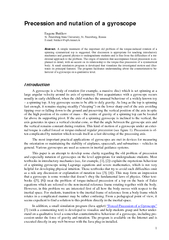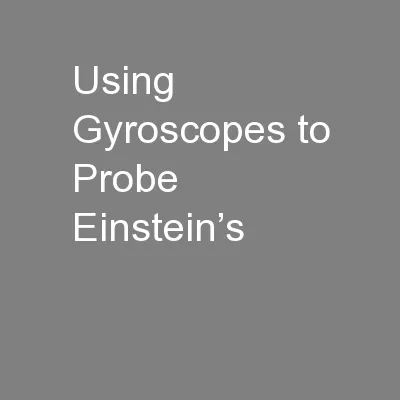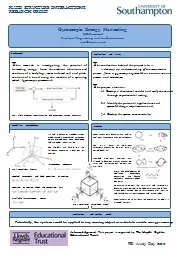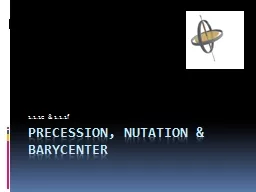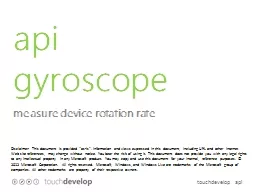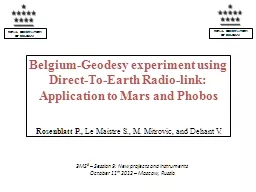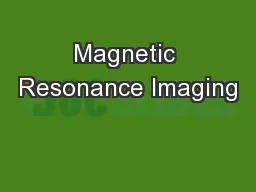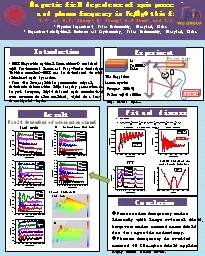PDF-Precession and nutation of a gyroscope
Author : test | Published Date : 2015-08-03
Eugene Butikov St Petersburg State University St Petersburg Russia Email butikovspbrunnetru Abstract A simple treatment of the important old problem of the torqueinduce Regular
Presentation Embed Code
Download Presentation
Download Presentation The PPT/PDF document "Precession and nutation of a gyroscope" is the property of its rightful owner. Permission is granted to download and print the materials on this website for personal, non-commercial use only, and to display it on your personal computer provided you do not modify the materials and that you retain all copyright notices contained in the materials. By downloading content from our website, you accept the terms of this agreement.
Precession and nutation of a gyroscope: Transcript
Download Rules Of Document
"Precession and nutation of a gyroscope"The content belongs to its owner. You may download and print it for personal use, without modification, and keep all copyright notices. By downloading, you agree to these terms.
Related Documents

